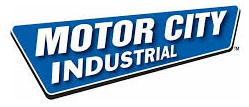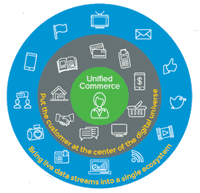Trip Report: Gartner Supply Chain Executive Conference 2018
Thankfully, I am now at the end of the Spring conference season, after numerous weeks on the road. It's actually hard work, since I attend virtually every session available, often do daily video reviews, etc., but in the end it's really worth it because so many readers enjoy these summary reports.
This week, I was out West for the Gartner Supply Chain Executive Conference, as usual in Scottsdale, AZ.
You can find my daily video reviews here: Gartner Day 1 and Day 2
| GILMORE SAYS: |
Society needs to do more to deal with the coming disruptions to labor markets, Zakaria said, but in the end was optimistic that humans would be freed of doing mundane tasks and rise to higher levels of activities.
WHAT DO YOU SAY?
Send us your
Feedback here
|
As many know, the Gartner conference is rooted in the same basic event that was started by AMR Research back in the 1990s. After Gartner acquired AMR in 2009, Gartner infused additional organizational and marketing muscle into the conference, largely to the good. I am sure the event is now much more profitable for Gartner than it ever was for AMR.
There were more than 2200 attendees this year, up from 1500 a couple of year ago and an all-time high, and clearly the event has some momentum, though all told I felt the content was a little down this year. That included having just one supply chain exec as a keynote speaker the first two days, and that a replacement with a not particularly inspiring story.
It's also important to understand that a good percentage of the breakout sessions are sponsored by various technology or consulting vendors, and the price tag isn't cheap, some $100,000 for a sponsor package that includes a presentation slot. But Gartner doesn't seem to have difficulty filling the sessions with sponsors.
All told there was certainly a lot of content presented. This week, I am going to focus on the keynotes, and will be back next week with highlights of some of the breakout sessions.
The opening day keynote and indeed the conference theme as a whole was around the topic of supply chain "digitization," which in my opinion is actually a difficult topic to really get your arms around.
Gartner analysts Dana Stiffler and Ken Chadwich covered a lot of ground, making, I think, the good point that having a series of digital projects does not equally becoming a digital business - a goal being chased it seems by an increasing number of CEOS.
Which of course begs the question of what digitization of the business or the supply chain really means, and I don't think this presentation well clarified that. From my view, digitization is in fact most commonly defined as a collection of technologies - sensors, artificial intelligence, 3D printing, robots, etc. - rather than as some more holistic framework.
Useful though was the comment from a short video recording of a 3M supply chain executive, who defined digitization as involving electronically connecting to every node in the supply chain, and creating so-called "digital twins" of products and processes.
So the obvious example of the latter would be the creation of an end-to-end model of a company's supply chain in a network design tool, such as offered by LLamasoft and others, that is that digital representation of the physical supply chain, allowing virtual testing of strategies and ideas for improvement or how to react to new opportunities.
Interestingly, Gartner applied its well-known technology "hype cycle" framework to digitization and found it was near the top - meaning companies are bound to hit many bumps and disappointments as digitization falls through the "trough of disillusionment" before finding and delivering real value, so be ready for that.
Stiffler and Chadwick emphasized that innovation leaders have a structured process to drive innovation, including a clear innovation strategy, the right supporting metrics, training, etc. In other words, innovation doesn't just happen, it must be catalyzed by an environment and structure that allows innovation to thrive.
As simple examples, 3M still asks its managers to spend 15% of their time on innovation thinking, while Garter noted Unilever has created a "Digifund" in which employees can apply for up to 10,000 euros for innovation projects - and such requests are automatically approved if a response from management is not received in 48 hours.
At a later breakout presentation, a Unilever manager said the program was such a success in 2017 that funding was doubled this year. Neat idea.
The real challenge, Gartner said, is how do you scale up all the promising digital programs developed in labs and pilots. There is no magic bullet, that's clear, but one key takeaway was the need to honestly assess whether your ambitions are really consistent with your culture, because Gartner research finds in fact the two are often out of sync, leading to failures.
CNN's Fareed Zakaria was the day 1 outside speaker, and we was very good and wisely mostly stayed out of politics. He is clearly very smart and a very polished speaker.
Interestingly, Zakaria said it is very clear the free markets and global trade are the only ways today to drive economic growth. But that globalization - combined with the impact of technology innovation- is threatening to many, so we shouldn't be at all surprised that there are pushbacks against these movements, as manifested in the possibility of US tariffs against Chinese or other imported goods.
Zakaria cited some data I had never considered. He said that for most of US history, jobs basically recovered around six months after the end of a recession. But in the downturn in the early 1990s, it took 15 months for that job recovery. In the 2001 recession, it was 27 months, and whopping 64 months after the Great Recession of 2008-09.
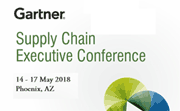 The point, he said, is that the historic link between the economy and jobs is broken. The point, he said, is that the historic link between the economy and jobs is broken.
And that is no doubt in part because of the rise of robotics, AI and other forms of automation. And thus came this scary but unfortunately I think very accurate comment: Zakaria said that software will soon be able to do almost everything better than humans.
He cited an influential magazine article written by Internet pioneer Marc Andreesen titled "Software Eats the World" that posited that software had simply broken through the hardware limitations that had always constrained progress.
In this new unconstrained world, progress everywhere proceeds according to Moore's Law, meaning incredible, almost mind-boggling gains.
The reality simply is software will be able to diagnose your medical issues based on your symptoms better than a doctor - and create a forecast better than the sharpest demand planner. Zakaria noted that someone at Stanford invented an AI program that creates symphony music - and experts can't tell the difference between computer generated and human written pieces. AI is also now being used to somehow create movie trailers from the film footage, taking over what was once thought to be a skill possessed by a small number of film industry talent.
Society needs to do more to deal with the coming disruptions to labor markets, Zakaria said - no kidding - but in the end was optimistic that on the other side humans would be freed of doing mundane tasks and rise to higher levels of activities.
Wish I was equally as optimistic - I am not. If three million truck drivers get replaced by self-driving vehicles, I am not sure what direction their higher-level careers are going to go.
On Wednesday, fighter pilot Anthony Bourke described the discipline with which the military executes pre-mission briefings and especially post-mission debriefs, the latter of which review issues and problems in a highly disciplined, egalitarian and non-judgmental fashion. The result: continuous improvement, and an "experience accelerator" that moves teams and individual performance ahead faster.
The technique should be used more in business and supply chain, was Bourke's theme, and I think he has something there. We have lots of reviews, for sure, but mostly focused on results, not process. Should, for example, there be a debrief at the end of every executive S&OP meeting? Worth pondering.
Nokia's Christian Forster, subbing for another company supply chain exec who had to cancel last minute, told a good but unremarkable story of the company's late pursuit of supply chain excellence. There were three phases: first, major efforts to cut costs through efficiencies, then added a focus on increasing supply chain agility, and now getting more customer centric.
I did like Nokia's notion of "conscious" factories, logistics and warehouses, which combined instrumentation - 10,000 sensors at one Chinese factory - with AI capabilities to drive visibility and responsiveness.
With that, I am out of space. Next week, summary of key breakout sessions - and some more thoughts on the conference as a whole.
Any reaction to this Gartner conference summary? Were you there? What did you think? Let us know your thought at the Feedback button below. |



![]()

![]()

![]()


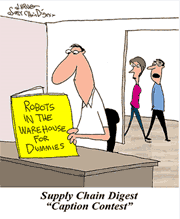

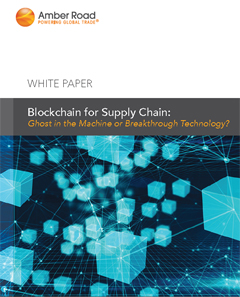
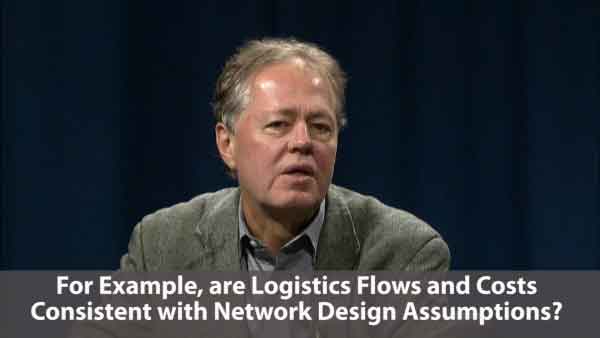



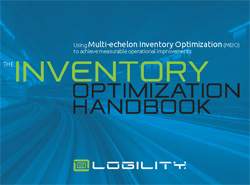
 The point, he said, is that the historic link between the economy and jobs is broken.
The point, he said, is that the historic link between the economy and jobs is broken.

